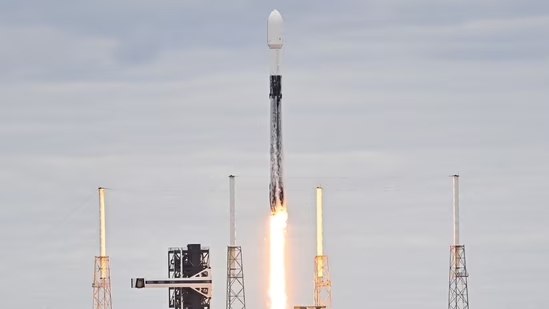- Tuesday, 19 November 2024
Elon Musk’s SpaceX launches ISRO's communication satellite GSAT-N2 into space
Nov 19: Elon Musk-owned Space X successfully launched the Indian Space Research Organisation (ISRO)'s communication satellite GSAT-N2 from Canaveral Space Force Station in Florida on Tuesday. The advanced communication satellite was launched using SpaceX’s Falcon 9 rocket.
The event marks the first of many commercial collaborations between the Indian Space Research Organisation (ISRO) and SpaceX.
Radhakrishnan Durairaj, chairman and managing director of New Space India Limited, the commercial arm of the Indian Space Research Organisation (ISRO) told NDTV that the GSAT N2 or GSAT 20 has been placed in a precise orbit.
What is GSAT-N2?
The GSAT-N2 is a communication satellite jointly developed by ISRO's Satellite Centre and Liquid Propulsion Systems Centre. With 48 Gbps data transmission capacity, this high-throughput satellite will enhance broadband services and provide in-flight connectivity nationwide.
It will continue the GSAT series of communication satellites and add data transmission capacity to the communication infrastructure required for India's Smart Cities Mission. The satellite is expected to remain in operation for 14 years.
"The satellite is equipped with 32 user beams, comprising 8 narrow spot beams over the Northeast region and 24 wide spot beams over the rest of India. These 32 beams will be supported by hub stations located within mainland India. The Ka-Band HTS communication payload provides a throughput of approximately 48 Gbps,” the Indian space agency said.
Why Space X was picked for the mission?
ISRO French commercial launch service provider Arianespace for such heavy satellite launches; however, the company does not have any operational rockets currently to launch a massive payload – 4,700 kg in the case of the GSAT N2 satellite.
India's launch vehicle, LVM-3, can also carry payloads up to 4,000 kg. Hence, SpaceX's Falcon 9 rocket was chosen to launch the satellite. (Hindustan Times)







-square-thumb.jpg)
-square-thumb.jpg)
-original-thumb.jpg)





